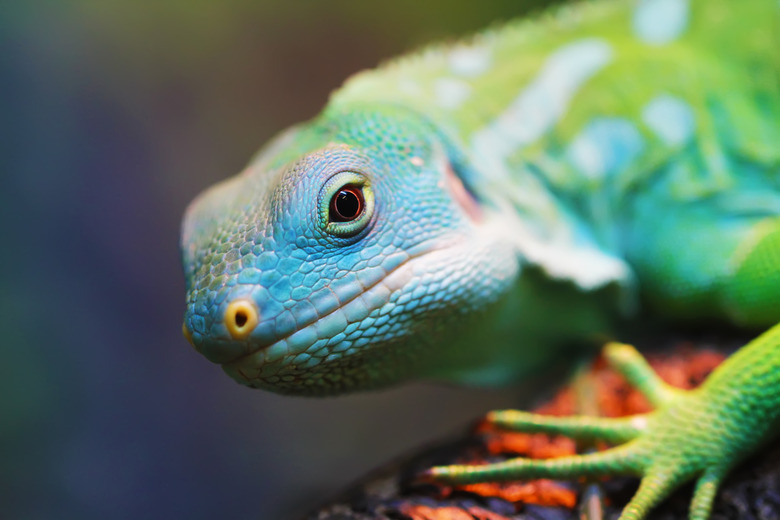Five Classes Of Chordates
Chordates are organisms that, at some time during their development, possess a rod called a notochord extending the length of their bodies at full development. The notochord acts as support during movement by stiffening the body and lies ventral to the central nervous system and dorsal to the gut. There are several classes of chordates, including, fish, birds, reptiles, mammals and amphibians.
Class Reptilia
Class Reptilia
Reptiles are animals that have scaly, water-resistant skin, lay shelled eggs and breathe air. They are tetrapods and will have four limbs or else directly descend from a four-limbed ancestor. Reptiles are also cold-blooded animals and are not able to withstand cold weather but must depend on the temperature of its surrounding environment to maintain its body temperature. Some examples of reptiles are sea turtles, snakes, crocodiles and chameleons.
Class Amphibia
Class Amphibia
Amphibians–meaning "two lives"–spend their lives both on land and in the water. Every amphibian is born in the water with tails and gills; however, as these creatures grow, they develop legs, lungs and the ability to live on land. Amphibians are cold-blooded animals and remain the same temperatures as the water or air in their surrounding environment. Some examples of amphibians are frogs, newts, toads, caecilians, blindworms and salamanders.
Class Chondrichthyes
Class Chondrichthyes
The skeleton of Chondrichthyes, or cartilaginous fish, is made up entirely of cartilage. Their mouths lie on the underside of their heads and typically contain numerous sharp teeth. They have asymmetrical, upward-curving tails and do not have a swim or lung bladder. There are five to seven gill slits on both sides on a Chondrichthyes body, and they reproduce by using modified fins to pass sperm from the males to the females. Some examples of Chondrichthyes are sharks, chimaeras, rays and skates.
Class Agnatha
Class Agnatha
Agnathans, or jawless fish, are the oldest known vertebrates. There are two primary types in the Agnatha class, which are hagfish and lampreys. The hagfish are specialized scavengers. Hagfish are also relatives of the slime fish and try to shed their slimy coats and make new ones by attempting to tie themselves into knots. The lamprey is a parasite that uses suction to attach itself to other fish in order to feed.
Class Mammalia
Class Mammalia
Mammals are warm-blooded animals that have hair and produce milk for the purpose of nourishing their young. A mammal's body will maintain approximately the same temperature at all times. In the heat a mammal will sweat or pant to cool down, and in the cold the mammal's fat and fur or hair acts as insulation. Most mammals display adaptability to all types of conditions and have larger brains than any other vertebrate. Some examples of mammals are bears, camels, monkeys, cheetahs, bats and dolphins.
References
Cite This Article
MLA
Roberts, Calia. "Five Classes Of Chordates" sciencing.com, https://www.sciencing.com/five-classes-chordates-8145209/. 24 April 2018.
APA
Roberts, Calia. (2018, April 24). Five Classes Of Chordates. sciencing.com. Retrieved from https://www.sciencing.com/five-classes-chordates-8145209/
Chicago
Roberts, Calia. Five Classes Of Chordates last modified August 30, 2022. https://www.sciencing.com/five-classes-chordates-8145209/
